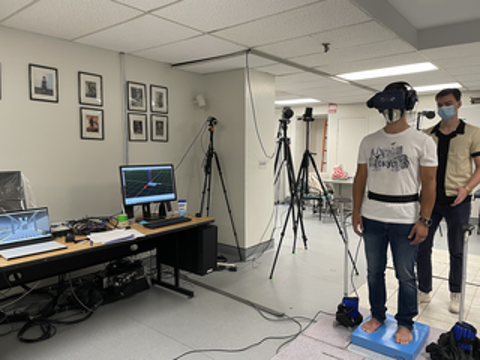Striking the Right Balance: Article Summary for ‘Sounds Disrupt Balance in People with Vestibular Disorders, Student Finds’
In this edition of “Striking the Right Balance,” Michael Vekasi, AuD, R.Aud, Aud(C), FAAA provides an overview of an article on the role of sound in disrupting balance for people with inner ear disorders, with special permission to reprint from The Hearing Review.
Michael Vekasi, AuD, R.Aud, Aud(C), FAAA coordinates the “Striking the Right Balance,” feature which will cover the latest information on ‘all things vestibular.’ If you would like to be more involved in all things vestibular, please check out and like our Facebook page by searching for “CAA National Vestibular Special Interest Group” within Facebook. You can also reach us by email at CAAvestibular@gmail.com.
Reprinted with permission from The Hearing Review
A research article published by Lubetzky, Cosetti, Harel, Sherrod, Wang, Roginska, et al. (2025) was recently summarized in The Hearing Review (2025). The researchers looked at how people with unilateral vestibular hypofunction, compared to healthy controls, integrated sound and visual cues for balance in a virtual reality (VR) immersive subway environment. They found that the addition of contextually-accurate sounds, to a standing balance task in simulated real-life, increased sway in people with vestibular hypofunction but not in healthy controls (Lubetzky, Cosetti, Harel, Sherrod, Wang, Roginska, et al., 2025). In addition to the findings of this article, this research highlights a novel use of VR in vestibular testing. The use of VR has previously been used mostly in conjunction with the management or rehabilitation of vestibular hypofunction. This research article demonstrates the expanded functionality of VR to benefit clinicians and their patients for both the assessment and treatment of balance problems. The Following Has Been Reprinted With Permission By Hearingreview.Com: Sounds Disrupt Balance in People with Vestibular Disorders | The Hearing Review Summary: A new study reveals that auditory stimuli, like subway sounds or white noise, significantly impact balance in individuals with vestibular hypofunction, suggesting a need to integrate sound into balance assessment and therapy. Takeaways-
- Auditory Impact on Balance: Research shows that sounds, particularly in combination with moving visuals, can worsen balance issues in people with unilateral vestibular hypofunction.
-
- Virtual Reality Experiment: Participants in a simulated subway environment demonstrated increased body sway when exposed to audio, highlighting the vestibular system’s sensitivity to auditory inputs.
-
- Implications for Therapy: Incorporating real-world sounds and challenging visual cues into balance training could enhance interventions for vestibular disorders, with portable VR headsets offering a promising tool for assessment and treatment.

References
-
- Lubetzky AV, Cosetti M, Harel D, Sherrod M, Wang Z, Roginska A, et al. (2025) Real sounds influence postural stability in people with vestibular loss but not in healthy controls. PLoS ONE 20(1): e0317955. https://doi.org/10.1371/journal.pone.0317955
-
- Medical Xpress (2025). VR subway experiment highlights role of sound in disrupting balance for people with inner ear disorder [Website Resource]. Retrieved from: https://medicalxpress.com/news/2025-01-vr-subway-highlights-role-disrupting.html
-
- The Hearing Review (2025). Sounds disrupt balance in people with vestibular disorders, study finds [Website Resource]. Retrieved from: https://hearingreview.com/hearing-loss/vestibular-care/vestibular-testing/sounds-disrupt-balance-in-people-with-vestibular-disorders-study-finds

